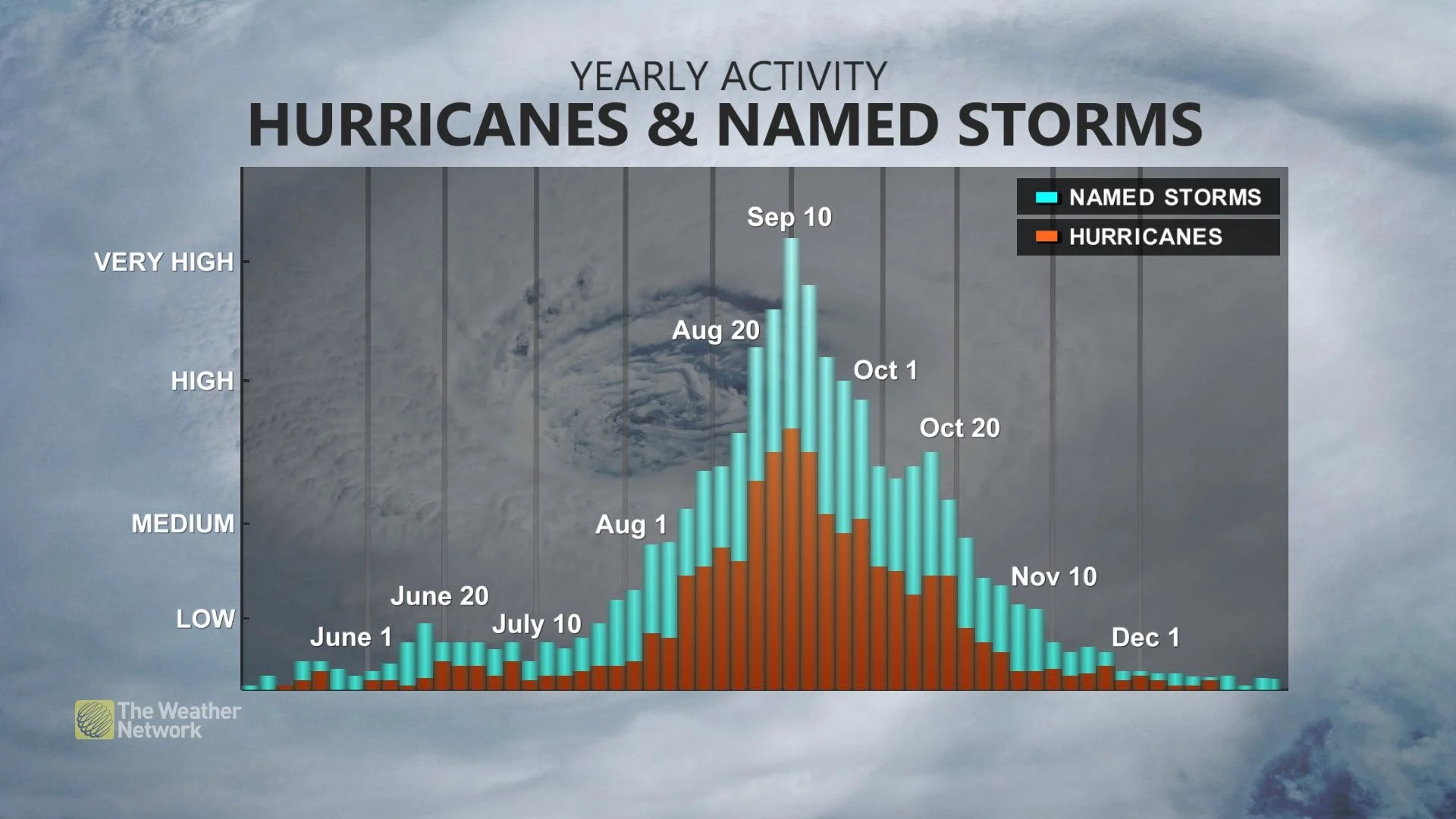
Tropical Storm Fernand spins to life in the Atlantic behind Erin
The season’s sixth named storm formed near Bermuda on Saturday
Tropical Storm Fernand formed in the southwestern Atlantic Ocean on Saturday afternoon.
Forecasters expect the storm to strengthen over the next couple of days as it moves north and eventually curves out to sea.
The new storm is another reminder that we’re quickly coming up on the peak of the Atlantic hurricane season.
DON’T MISS: The high-stakes factors that decide where a hurricane tracks
Fernand forms far from land
A disturbance southeast of Bermuda organized into Tropical Storm Fernand on Saturday afternoon.

The storm formed on the heels of former Hurricane Erin, which lost tropical characteristics as it raced into the northern Atlantic Ocean on Friday.
A reconnaissance aircraft flying through the storm found that it had maximum sustained winds of 65 km/h. The U.S. National Hurricane Center (NHC) expects Fernand to gradually strengthen over the next couple of days, and it could come close to hurricane strength by Monday.

Fernand should remain out to sea as it moves north toward the northern Atlantic over the next five days. Waves from the new system may begin to affect Newfoundland by the latter half of this upcoming week.
Atlantic hurricane season nearing its peak
We’re quickly approaching the heart of the Atlantic hurricane season, which historically peaks around the second week of September.
Fernand’s formation continues to place us a few steps ahead of the progress of an ‘average’ season. We normally wouldn’t see the Atlantic’s sixth named storm develop until Aug. 29.

It only takes one storm to make for a bad hurricane season. Folks across Eastern Canada should prepare for hurricanes well before any storms threaten the region.
Ensure you have emergency plans and supplies in place for the duration of the season. Remember that the wind, rain, and tornadoes from landfalling storms can even affect Ontario and Quebec.
Header image created using graphics and imagery from Canva.
